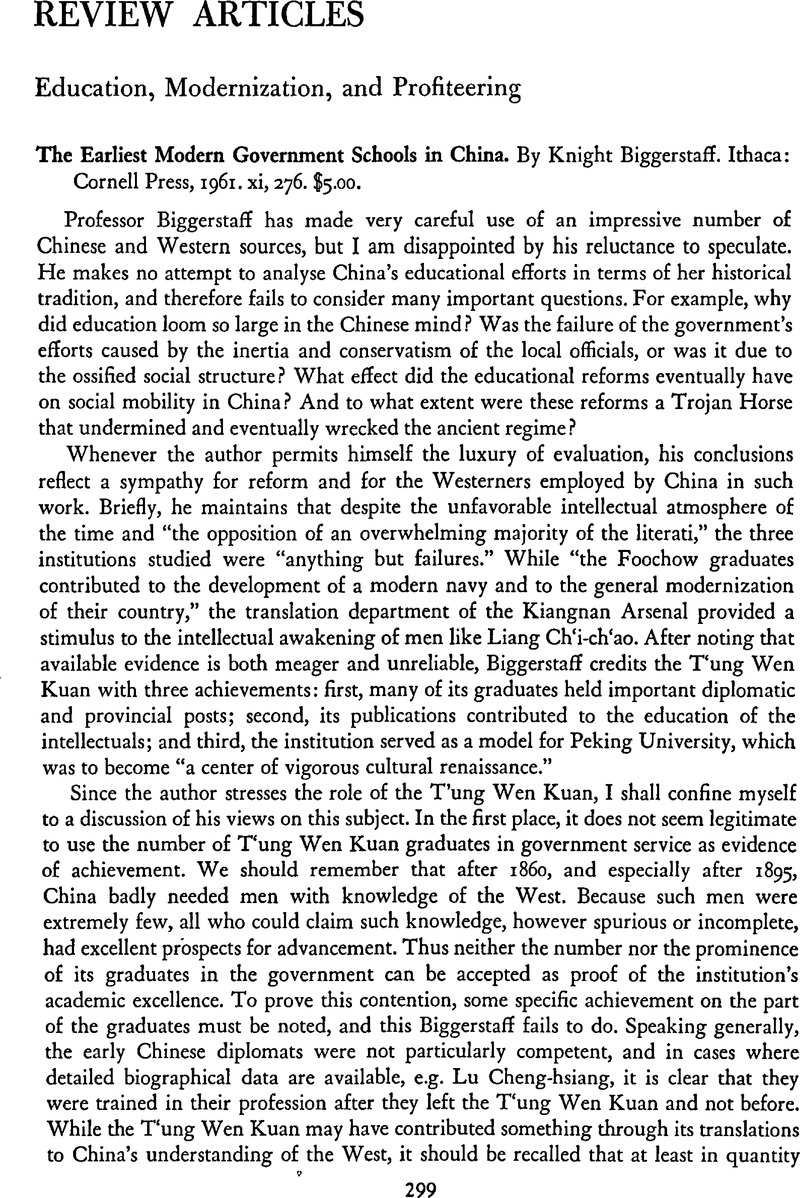No CrossRef data available.
Article contents
Education, Modernization, and Profiteering
Review products
Published online by Cambridge University Press: 23 March 2011
Abstract

- Type
- Review Articles
- Information
- Copyright
- Copyright © Association for Asian Studies, Inc. 1965
References
1 Tsien, Tsuen-hsuin, “Western Impact on China Through Translation,” Far Eastern Quarterly, XIII (1954): 316. 317Google Scholar.
2 On p. 137 of his book, Biggerstaff quotes Shih-lu, KH 424, pp. 8–9 for his statement that the new university was modelled on the T'ung Wen Kuan. Actually, the passage refers to a petition by a minor official, Huang Tsan-shu, to have the T'ung Wen Kuan abolished. When Huang's memorial to the throne was referred to Sun Chia-nai and the Tsungli Yamen, these conservatives timidly suggested that a decision be postponed until the new university was solidly on its feet. Thus, the passage sheds interesting light on the whole situation. First, the university was devised to replace and supersede the inefficient T'ung Wen Kuan. In their eagerness to do good, the radicals could not wait to have the earlier institution abolished; at the height of the Hundred Days' Reform, even minor officials like Huang voiced their acute dissatisfaction with the language school. Luckily for Martin, most of the top officials favored a gradual policy. They defended the T'ung Wen Kuan not because it had made any outstanding contribution, but because they disliked innovation. If one may judge by Martin's maneuvering of Li Hung-chang (see footnote 4), it is not improbable to assume that he obtained the support of others in a similar manner.
3 Duus, Peter, “Science and Salvation in China: The Life and Work of W. A. P. Martin,” Papers on China (Harvard University), 1956.Google Scholar
4 By his own account, Martin stands guilty of sycophancy. On p. 124 of The Siege in Peking, he records an interesting conversation between himself and Li Hung-chang in which he unabashedly resorted to the most servile flattery in order to obtain from Li a letter of recommendation.


